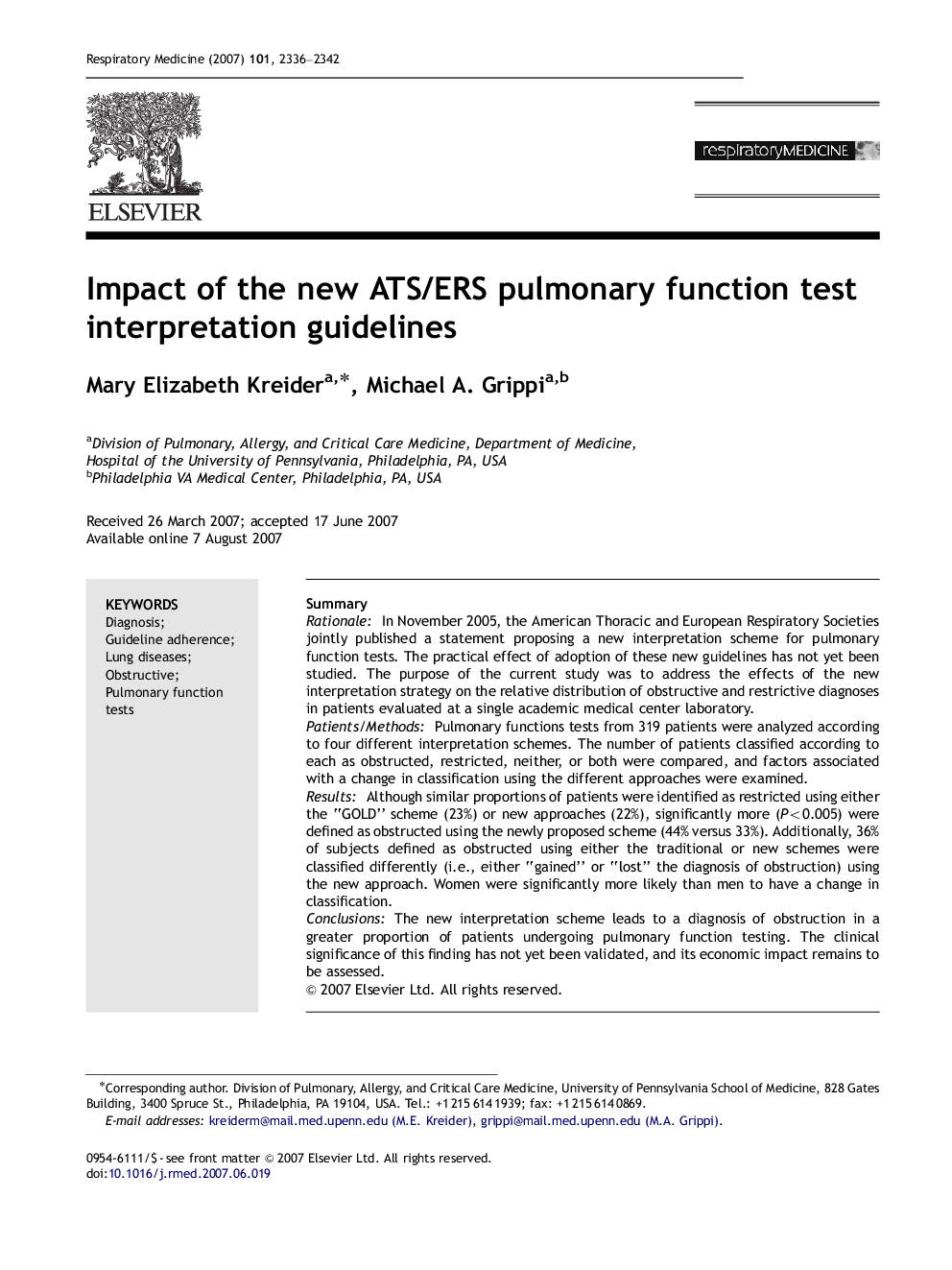| Article ID | Journal | Published Year | Pages | File Type |
|---|---|---|---|---|
| 4211841 | Respiratory Medicine | 2007 | 7 Pages |
SummaryRationaleIn November 2005, the American Thoracic and European Respiratory Societies jointly published a statement proposing a new interpretation scheme for pulmonary function tests. The practical effect of adoption of these new guidelines has not yet been studied. The purpose of the current study was to address the effects of the new interpretation strategy on the relative distribution of obstructive and restrictive diagnoses in patients evaluated at a single academic medical center laboratory.Patients/MethodsPulmonary functions tests from 319 patients were analyzed according to four different interpretation schemes. The number of patients classified according to each as obstructed, restricted, neither, or both were compared, and factors associated with a change in classification using the different approaches were examined.ResultsAlthough similar proportions of patients were identified as restricted using either the “GOLD” scheme (23%) or new approaches (22%), significantly more (P<0.005) were defined as obstructed using the newly proposed scheme (44% versus 33%). Additionally, 36% of subjects defined as obstructed using either the traditional or new schemes were classified differently (i.e., either “gained” or “lost” the diagnosis of obstruction) using the new approach. Women were significantly more likely than men to have a change in classification.ConclusionsThe new interpretation scheme leads to a diagnosis of obstruction in a greater proportion of patients undergoing pulmonary function testing. The clinical significance of this finding has not yet been validated, and its economic impact remains to be assessed.
